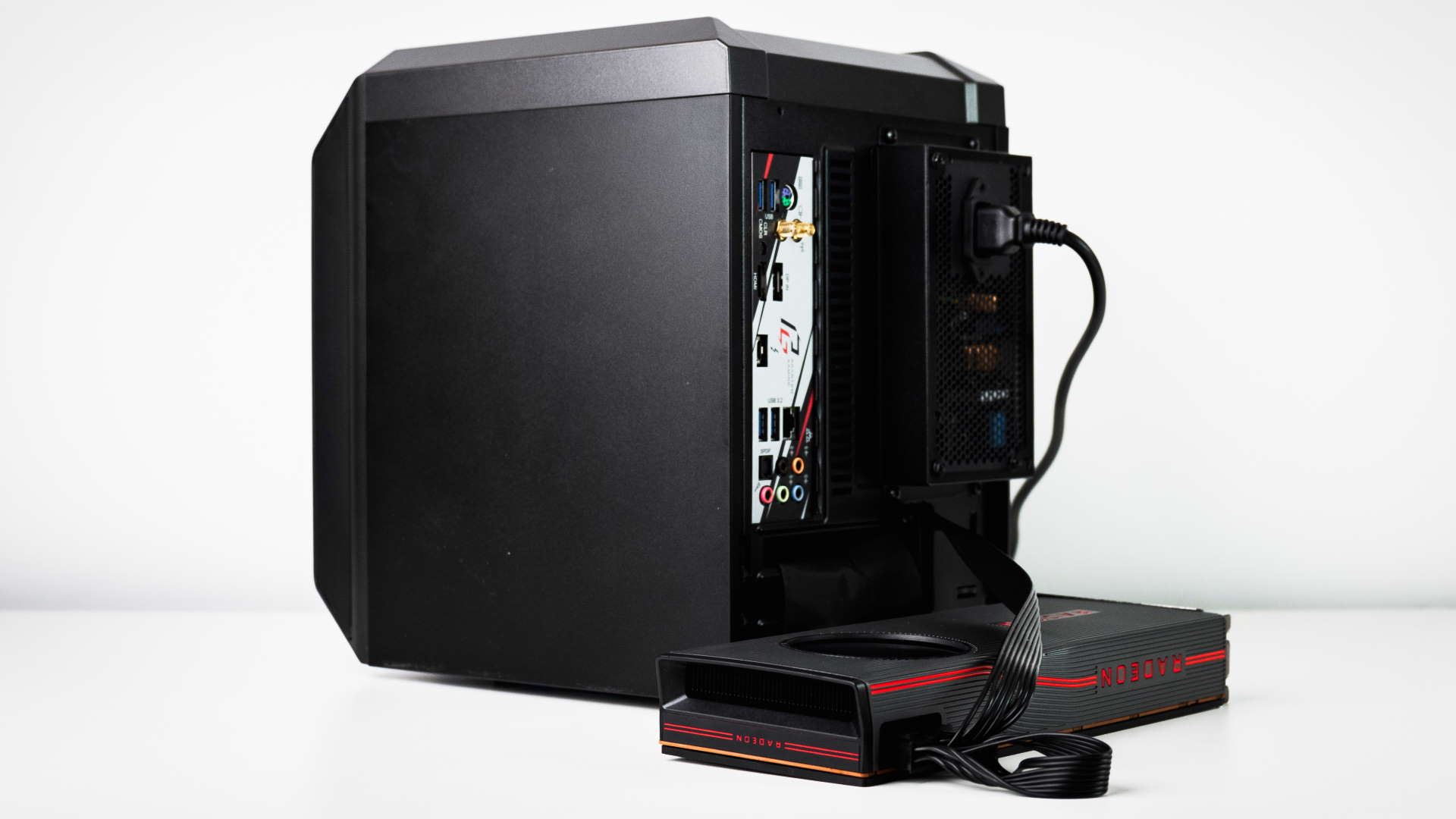- Bitfenix Prodigy Triple Slot Gpu Card
- Bitfenix Prodigy M Review
- Bitfenix Prodigy Triple Slot Gpu Machine
- Bitfenix Prodigy Dimensions
- Triple Slot Gpu
Hello guys, I have an original BitFenix Prodigy and looking to upgrade my graphics card to a Strix 1070ti. I currently have a 2 slot GPU with a little room left, just not sure if I can squeeze the 2.5 slot Strix gpu in there.
A Closer Look - Outside
A first look in a well-lit environment will reveal a difference in color between the plastic elements and the metal side panels. The process of getting both the colored plastic and the painted steel bits to match perfectly is nearly impossible, but the discrepancy should not be as prominent. The difference is also exaggerated in these pictures due to the long exposure time I had to use to take them without a flash. Look straight at the Prodigy M's front and it essentially looks like a classic Prodigy with the same flexible handles and feet.
With a single 5.25' drive bay, the front of the Prodigy M looks just like that of the original Prodigy. Turn the chassis around and it becomes apparent that BitFenix had to think outside of the box to fit a micro-ATX motherboard within a case of this size. Also noteworthy is the fact that there is no visible PSU bay in the back. Both side panels are solid, and BitFenix placed the I/O and power button on the side panel.
Bitfenix Prodigy Triple Slot Gpu Card
BitFenix's logo has been put on the bottom of the solid front panel, and the top comes equipped with the aforementioned drive bay. All newly colored versions of the Prodigy M come with a solid front panel as opposed to the metal mesh front the original Prodigy in black featured.
Bitfenix Prodigy M Review
 The fan in the rear has been placed on the bottom because of the motherboard tray's upside-down alignment. BitFenix allows for both 120 mm and 140 mm variants to be placed there. A 120 mm fan to push air out the back of the Phenom Micro-ATX has also been included out of the box. While its inclusion is certainly a plus, I would have liked them to go all out by installing a 140 mm unit there instead. Above the fan are the five expansion slots for the mATX board and a single thumbscrew that holds it all the covers in place. It is good to see an additional slot here as it allows for dual-slot, multi-GPU rigs to be assembled within the chassis regardless of the motherboard's slot configuration. While BitFenix used separate thumbscrews on the original ITX-equipped Prodigy, such is no longer the case with the Prodigy M: All expansion slots come lose as soon as you detach the little plate holding the covers in place, which is inconvenient.
The fan in the rear has been placed on the bottom because of the motherboard tray's upside-down alignment. BitFenix allows for both 120 mm and 140 mm variants to be placed there. A 120 mm fan to push air out the back of the Phenom Micro-ATX has also been included out of the box. While its inclusion is certainly a plus, I would have liked them to go all out by installing a 140 mm unit there instead. Above the fan are the five expansion slots for the mATX board and a single thumbscrew that holds it all the covers in place. It is good to see an additional slot here as it allows for dual-slot, multi-GPU rigs to be assembled within the chassis regardless of the motherboard's slot configuration. While BitFenix used separate thumbscrews on the original ITX-equipped Prodigy, such is no longer the case with the Prodigy M: All expansion slots come lose as soon as you detach the little plate holding the covers in place, which is inconvenient.Bitfenix Prodigy Triple Slot Gpu Machine
Both side panels are solid, and BitFenix placed the I/O and power button a the side panel. The I/O consists of two USB 3.0 and the usual audio I/O. To keep with the Prodigy M's overall color, both the Power and Reset button are green as well.Bitfenix Prodigy Dimensions
The Prodigy M comes with the same top cover as the Prodigy. It makes accessing all the fans in the ceiling a breeze, or the connectors at the motherboard's very top or bottom edge, since the bottom will actually face up.
Triple Slot Gpu
There is a large plastic cover on the Prodigy M's underside; it spans across all the openings there and is held in place by magnets, which makes its removal easy. While the inclusion of something like this is cool, it does get in the way of the floor-mounted fan's airflow. Remove the cover and you can clearly see the large vent that may either take two 120 mm fans or your choice of a single 200 mm or 230 mm unit. This particular spot may instead also be used to install up to two 3.5' hard drives or a combination of a single 120 mm fan and a storage unit. The PSU bay in the front actually faces downward, which has the PSU stand up—with a pre-routed power cable to the power plug in the back.